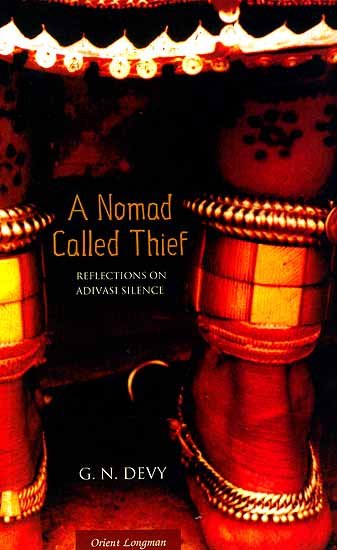Quoted from “Swearing by Mahasweta” by Gopalkrishna Gandhi, The Hindu, August 7, 2016 >>
Ms. Devi had cast off the trappings of the middle class she was born into and chose to live simply, often roaming the country with her subjects as she did research. In more than 100 novels and short stories, she wrote of India’s tribal communities and Maoist rebels, prostitutes and nomads, beggars and laborers.
In 1997 she earned the Ramon Magsaysay Award, which has been called the “Asian Nobel Prize,” for her writing and activism on behalf of tribal communities. […]
“Her writing addressed one single word: injustice,” G. N. Devy, a writer and activist who worked closely with Ms. Devi, said. “Wherever she saw what she thought was injustice, she plunged into the struggle and never looked back.” […]
Source: “Mahasweta Devi, Bengali Writer and Activist Who Fought Injustice, Dies at 90”, Obituary by Kaushik Swaminathan (New York Times, 2 August 2016)
URL: http://www.nytimes.com/2016/08/03/books/mahasweta-devi-bengali-writer-and-activist-who-fought-injustice-dies-at-90.html?_r=0
Date visited: 27 March 2021

Reflections on Adivasi Silence and Voice by Ganesh [G.N.] Devy | Publications >>
A call for harnessing the potential of Denotified Tribes, Nomadic and Semi-Nomadic Tribes for national development: “India’s labour force must be liberated from an abhorrent colonial doctrine (‘criminality by birth’)” – Report and Recommendations of the Technical Advisory Group | “Adivasi”, “Tribals” and “Denotified tribes” (classifications in different states) >>
In India, mobile peoples including former hunters-gatherers and criminal tribes, now denotified, have been the primary victims of both democracy and development. Adivasis have only seemed to appear in recorded history when resisting the state and their consciousness has been reduced to this identity along with their politics.
Source: Review by Ashish Saxena (Department of Sociology, University of Allahabad) on The subaltern speaks: Truth and ethics in Mahasweta Devi’s fiction on tribals (2016) by Sanatan Bhowal, a book which “looks at the ideas of different thinkers with respect to selected texts of Mahasweta Devi’s fiction on tribal life”
URL: https://orientblackswan.com/pressreviews/The%20Subaltern%20Speaks.pdf
Date visited: 27 March 2021
Narrativizing Resistance: Mahasweta Devi’s Representation of the Tribal Guerrilla
While imperialism is generally understood in the sense of the White/ First World encroachment over the Non-White/Third World, another sense may also be attached to it. This other sense of imperialism evokes the existence of yet another world – the Fourth World, composed of the world’s indigenous peoples – whose history and ecology have been appropriated by the other two worlds. The World Bank’s exercise of drawing up economic maps of the world involves, among other things, this imperialism [as analysed by Gayatri Chakravorty Spivak in Mahasweta Devi’s Imaginary Maps]. […]
It may be noted that the narrativization of [the Bengal Naxalite] movement in Operation?—Bashai Tudu seems to question the veracity of the available historical accounts. […]
Claiming to speak for the tribal, the author then ‘sets the records straight’ herself. But the very fact that she uses literature to ‘correct’ history raises some important questions: Can literature which is supposedly ‘fictional’ correct history which is supposedly ‘factual’? Or are both literature and history allied processes, producing verbal constructs? Finally, how is the ideological commitment of the novelist different from that of the historian while narrativizing an event from history?
In Mahasweta Devi’s ideological project of ‘setting the records straight’, the myth of Bashai Tudu plays an important role. The creation of this myth implies the irrelevance of other, more systematized ideologies for the tribals. […]
The general trend in the ‘civilized’ perception of tribal nudity alternates between a scathing denunciation and a romantic glorification. By contrast, Mahasweta Devi’s treatment of tribal nudity is deromanticizing. Sometimes, this nakedness becomes a trope of empowerment for the tribal woman, as in her short story “Draupadi”. So Draupadi, the victim of multiple rapes, retaliates by remaining publicly naked and thereby intimidates the Senanayak. […]
Source: “Narrativizing Resistance: Mahasweta Devi’s Representation of the Tribal Guerrilla” by Dr. Ivy Imogene Hansdak (Jamia Millia Islamia University New Delhi), The Johar Journal (Issue 01, July-Dec 2020)
URL: https://joharjournal.org/narrativizing-resistance-mahasweta-devis-representation-of-the-tribal-guerrilla/
Date visited: 28 March 2021
[Bold typeface added above for emphasis]
“The Aryans describe their enemies as dark in complexion, noseless or flat-nosed, of harsh speech, not honouring the Aryan gods, not observing the Aryan religious ritual, but rich in material possessions and living in fortified cities. They are named Dāsas, Asuras, Panis and Kīkatas. The Aryan invaders finally triumphed over the non-Aryans, many of whom were killed, enslaved or driven further inland. In this land, which the Aryans conquered from their enemies, were founded the early Aryan settlements.” – B.G. Gokhale in Ancient India (Bombay, 1959 ed.), p. 22 | Up-to-date Safe search results: “Adivasi tribal bondage slavery trafficking” >>